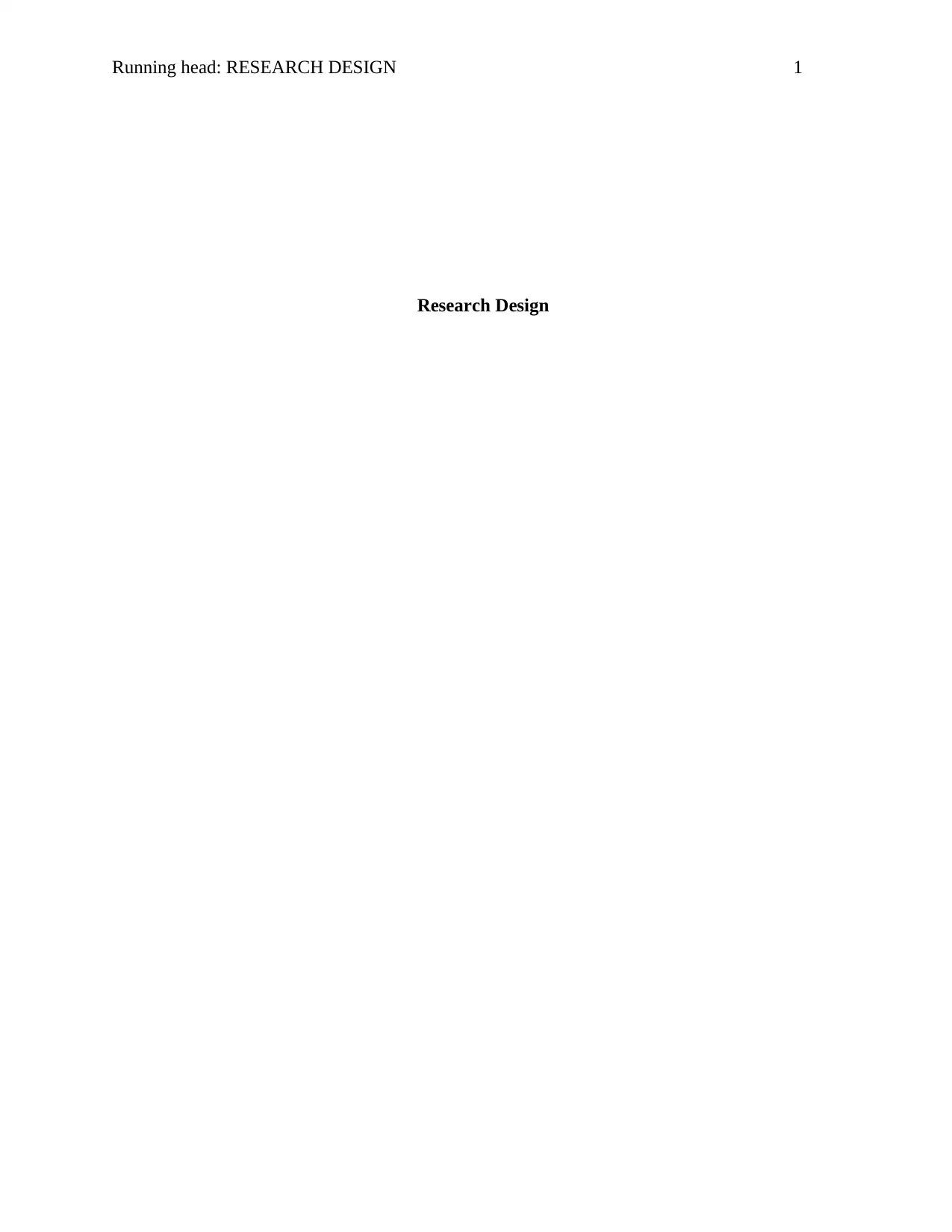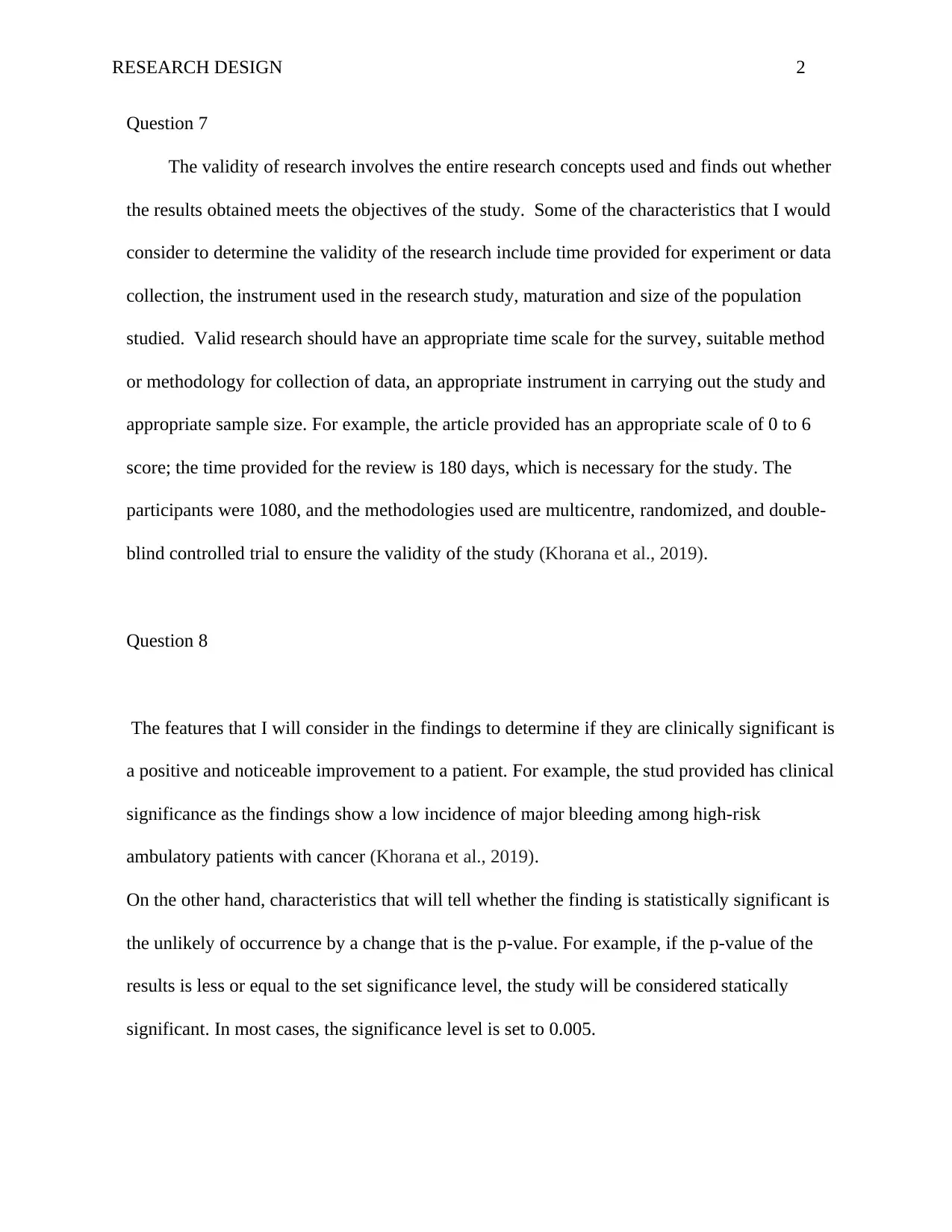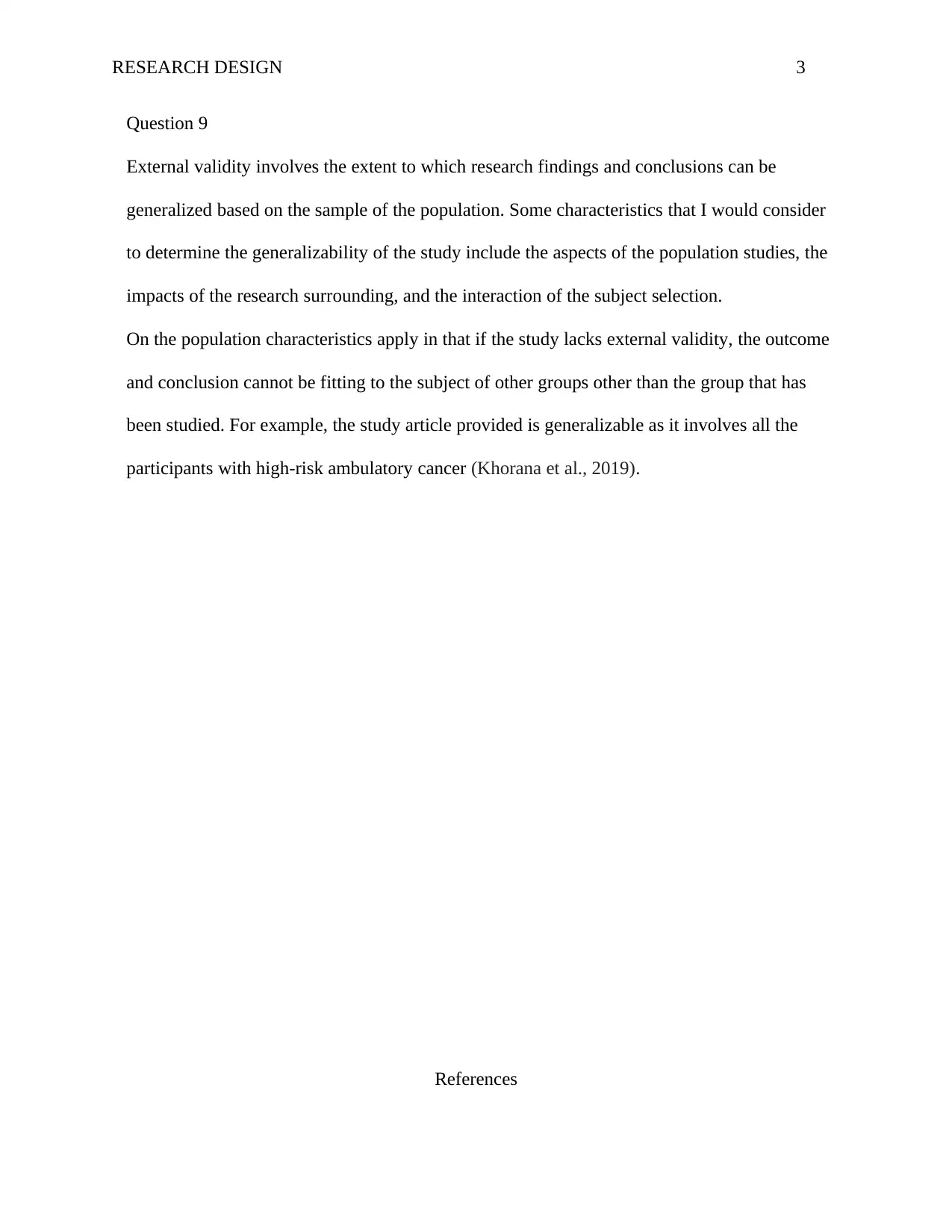Critical Analysis: Validity, Significance, and Generalizability Study
VerifiedAdded on 2023/03/31
|4
|429
|119
Homework Assignment
AI Summary
This assignment delves into the critical evaluation of a research article concerning thromboprophylaxis in high-risk ambulatory patients with cancer, focusing on the key aspects of research validity, clinical significance, statistical significance, and generalizability. The assessment of validity involves considering factors such as the study's timeframe, the appropriateness of the methodology used for data collection, the suitability of the research instruments, and the adequacy of the sample size. Clinical significance is determined by assessing whether the research findings demonstrate a positive and noticeable improvement for patients, while statistical significance is evaluated based on the likelihood of the results occurring by chance, typically indicated by the p-value. Generalizability, or external validity, is examined by considering the characteristics of the population studied, the impact of the research environment, and the subject selection process, ensuring that the findings can be applied to broader contexts and populations. The assignment references a study by Khorana et al. (2019) to illustrate these concepts, providing a practical context for understanding the evaluation of research in healthcare.
1 out of 4











![[object Object]](/_next/static/media/star-bottom.7253800d.svg)